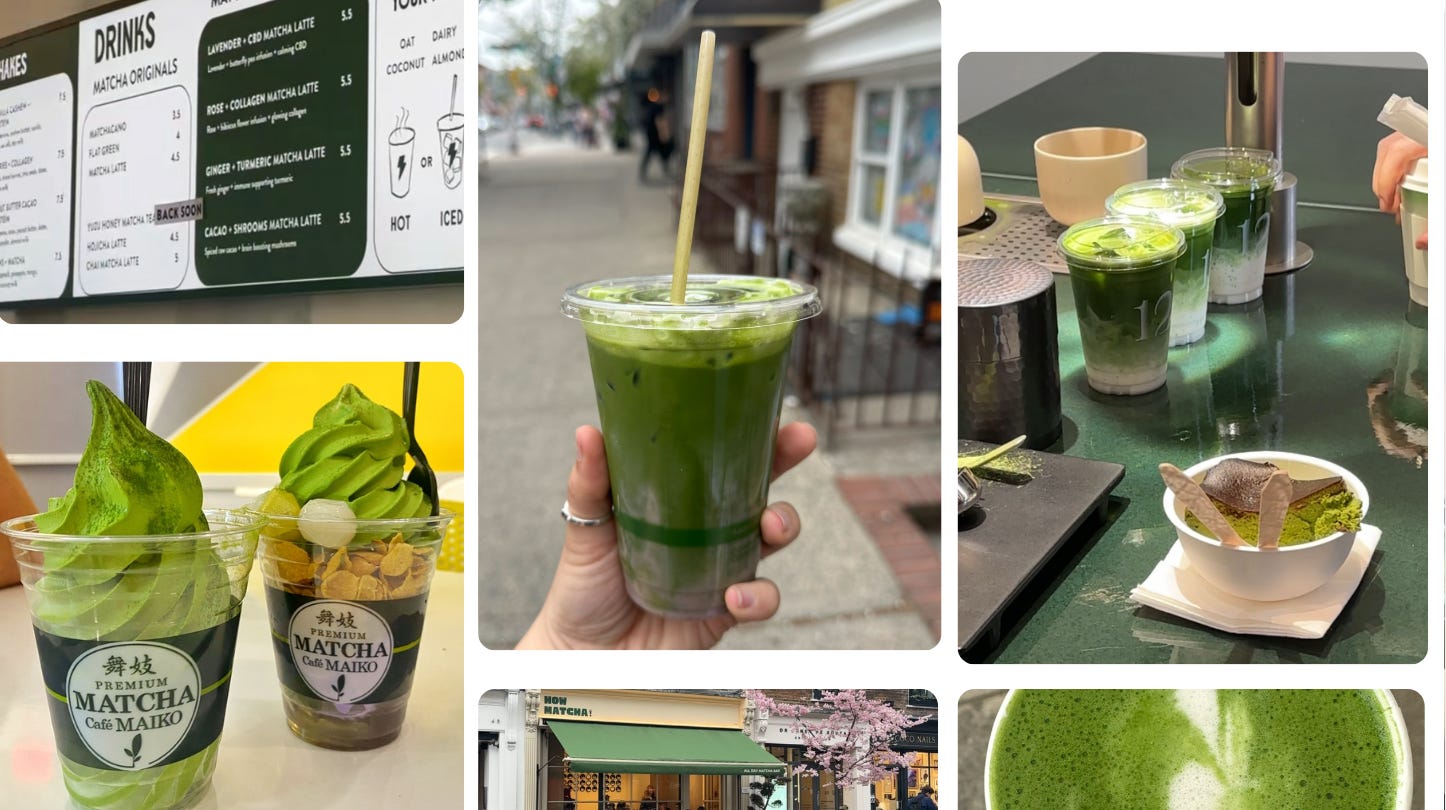When Matcha Is Your Personality
Amid a matcha boom, with its matcha girlies and sugary matcha lattes, can the premium green tea replace wine as a status symbol?
Annie Arriaga writes and makes videos for Food52 and elsewhere, and is a masters student at New York University’s Food Studies program. Annie will regularly be covering coffee, tea, and other beverages for Everyday Drinking.


